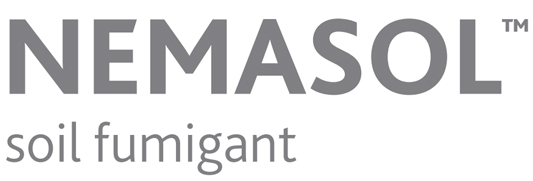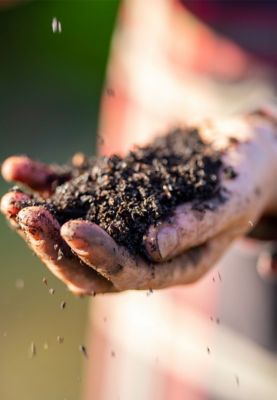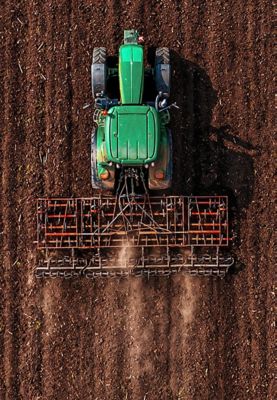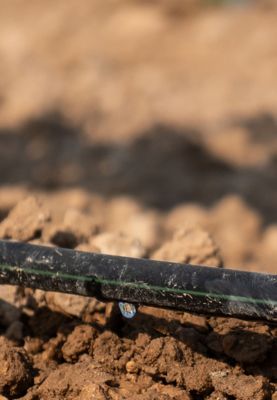Enhancing crop growth
Nemasol™ soil fumigant is used to help grow high-value fruit and vegetable crops such as tomato, sweet pepper, lettuce, melon, strawberry, cucumber, eggplant, potato, carrot, green bean, banana and pineapple. It is also widely used when growing potatoes, ornamentals and tree nurseries.
Nemasol leaves no quantifiable residues in the soil. The mode of action and the degradation of the products into simple organic compounds don’t give rise to any quantifiable pesticide residue in the subsequent cultivated crops. The use of Nemasol reduces the need for other pesticides, further reducing the risks of residues from those products in the crops.
Nemasol is compatible with integrated pest management (IPM) and can be used in combination with other techniques to control soil parasites. These techniques include solarization, rotation, biofumigation, the use of resistant crop varieties and the incorporation of beneficial organisms.
See section “How does Nemasol fit in an integrated pest management strategy” in our FAQs.
Biological activity
Nemasol provides protection against a vast catalog of soil-inhabiting plant pathogenic organisms such as nematodes and fungi as well as bacteria and some pests like Symphylans (soil-dwelling arthropods). It also helps manage weeds and control their seeds.
![]()
Nematodes
Root-knot nematodes
Meloidogyne spp.
Cyst nematodes
Globodera spp.
Heterodera spp.
Free-living nematodes
Paratylenchus spp.
Pratylenchus spp.
Rotylenchulus spp.
Trichodorus spp.
![]()
Fungi
Fusarium spp.
Phialophora spp.
Phoma spp.
Phytophthora spp.
Pythium spp.
Sclerotinia spp.
Verticillium spp.
Aphanomyces spp.
Macrophomina spp.
Sclerotium spp.
Monosporascus spp.
Thielaviopsis spp.
![]()
Weeds
Amaranthus spp.
Galium aparine
Malva spp.
Matricaria spp.
Mercurialis annua
Poa annua
Senecio spp.
Solanum spp.
Sorghum halepense
Stellaria spp.
Taraxacum officinale
Portulaca spp.
Orobanche spp.
Cuscuta spp.
Echinochloa spp.
Polygonum spp.
Chenopodium spp.
Cirsium spp.
![]()
Bacteria
Ralstonia solanacearum
![]()
Other
Symphylans
Metam and MITC are also known to control certain stages of soilborne threats, such as:
- Wireworms (Agriotes)
- Larvae of common European crane fly in lettuce (Tipula paludosa)
- Larvae of marsh crane fly in cabbage (Tipula oleracea)
- Bacteria causing common scab in potatoes (Streptomyces scabiei)
- Bacterial black spot in lamb’s lettuce (Acidovorax valerianellae)
- Moko bacterial disease in bananas (Ralstonia solanacearum)
Yield maximization
Soil disinfection carried out prior to seeding or planting creates a favorable biotope that promotes healthy crop growth. The application of Nemasol allows growers to start with a clean field, protecting the crops from a very early stage. In addition to their protective role, soil disinfectants help improve the crop's quality and yield by enhancing plant vigor.
Eastman potato trial in Turkey, 2021
| Parcel | Total yield kg/ha | Marketable kg/ha | % | Unmarketable kg/ha | % |
|---|---|---|---|---|---|
| Farmer practice kg/ha | 33.610 | 15.943 | 47 | 17.668 | 53 |
| Nemasol K | 53.509 | 40.384 | 75 | 13.125 | 25 |
| Nemasol | 53.088 | 42.033 | 79 | 11.055 | 21 |
| Control kg/ha | 32.534 | 8.527 | 26 | 24.007 | 74 |
Certain statements may not be applicable in all geographical regions. Product labeling and associated claims differ based on government requirements. Use plant protection products safely. Always read the label and product information before use.








